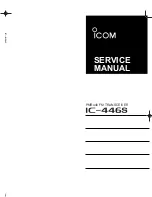
Pneumatic Connection
Clean all pipelines to remove dirt and scale before installation. Apply
a minimum amount of pipe compound to the male threads of the
fitting only.
Do Not use teflon tape as a sealant.
Start with the third
thread back and work away from the end of the fitting to avoid
contaminating the transducer. Install the transducer in the air line.
The inlet and outlet ports are labeled on the ends of the transducer.
Tighten connections securely. Avoid undersized fittings that will limit
the flow through the transducer and cause pressure drop down
stream.
NOTE:
Oil free air is required. Use a filter to remove dirt and
liquid in the air line ahead of the transducer. If an air
line lubricator is used, it MUST be located down
stream to avoid interference with transducer perfor
mance.
The user is responsible for insuring that the environ
ment in which the unit will be installed and the
operating gas are compatible with the materials in the
transducer.
Electric Connection
Make connections as shown in Figure 8.
CAUTION:
Effective November 1997 (DATE CODE NE), the DIN
Connector terminal connections have been changed. The ground
connection has been moved from terminal #3 to the ( ) terminal.
When replacing an existing unit, correct wiring on the mating
connector.
Wiring in Hazardous Areas
Table 1.
Hazardous Location Wiring Practices.
Country
Agency
Code
U.S.
Canada
Europe
FM
CSA
ATEX
ANSI/ISA RP 12.6 & ANSI/NFPA 70
CEC Part 1
EN 50 039, EN 60079-14, IEC 60079-14
Intrinsically Safe Connections
Table 2.
Intrinsically Safe Installation Drawings.
Underwriting Group
Drawing Number
FM (Factory Mutual)
CSA (Canadian Standards)
ATEX
EC-16984
EC-18005
EC-18007
Limitations/Exceptions
Type 3R - TAF, TDF upright position
TFA - CL I, Div 2 wiring per NEC ANSI/NPFA 70 for installation
without wiring parameters. TDF, TTF, TRF require an enclosure.
For dry locations and voltages less than 60Vdc, TTF & TRF
units must be in an enclosure.
Where loop voltages exceed 60Vdc (dry locations) or 30Vdc
(potentially damp locations), the TTF and TRF versions
must be installed meeting the electrical shock and fire
protection requirements of ANSI/ISA S82.01.
MAINTENANCE
To clean the Orifice, use the following procedure:
1.
Shut off the valve that is supplying air to transducer.
It is not necessary to remove the Transducer from
the air line.
2.
Remove the Orifice Assembly from the unit. For
detailed information see Figure 1 “T6000 Calibration
Configuration on page 1.
3.
Clean with alcohol and dry with compressed air.
NOTES:
Parts must be completely dry before reassembling.
If the standard maintenance procedure does not
correct the trouble, install the appropriate Service
Kit below:
16798-1
(3-15, 3-27 & 6-30 psig
Standard Range)
18238-1
(0-30 psig Extended Range)
18239-1
(0-60 psig Extended Range)
18240-1
(0-120 psig Extended Range)
18039-1
(Explosion-Proof Base)
Service Kits also include Gasket, O-Rings, and
Membranes to replace "W" Option product.
TROUBLE-SHOOTING
Table 1.
Trouble-Shooting.
Problem
Solution
(check)
No Output
Supply Pressure
Clogged Orifice
Input Signal
Leakage
Pneumatic Connections
Low or Improper
Span Adjust
Zero and Span Adjust
Supply Pressure Low
Output Leakage
Erratic Operation
DC Signal
Loose Wires or Connections
Liquid in Air Supply
Dirt in Magnet Gap
WARNING: Failure of Transducer could result in out
put pressure increasing to supply pres
sure possibly causing personal injury or
damage to equipment.
3






















